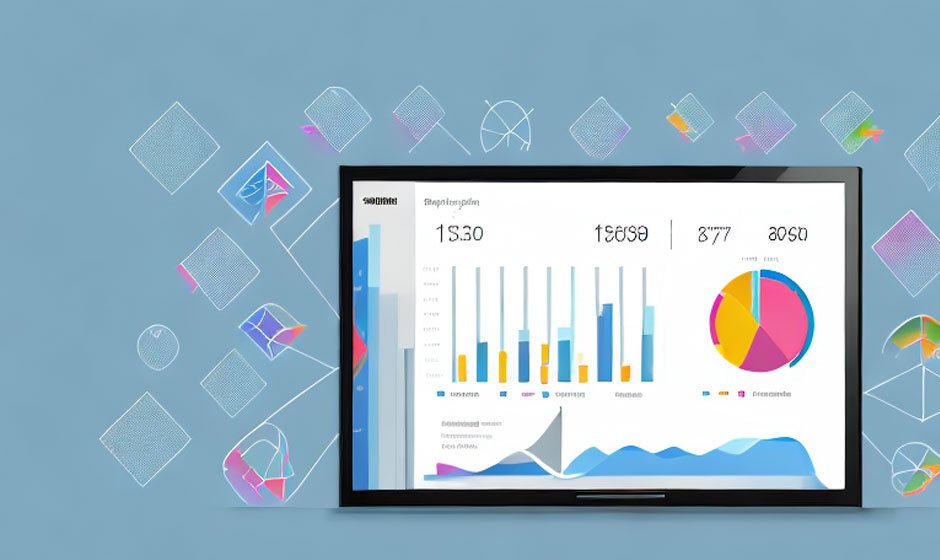Power BI Deployment Made Simple: A Step-By-Step Approach

In the ever-evolving field of data analytics, Power BI has emerged as a powerful tool that enables businesses to transform unstructured data into useful insights. For Power BI to be used to its full potential and for decision-makers to have access to current, accurate data, efficient deployment is essential. Today, we’ll investigate a step-by-step approach to Power BI deployment that works on the process and maximizes its advantages.
Step 1: Define Your Objectives
It is essential to clearly define your objectives before beginning the Power BI deployment process. What are the key business objectives you plan to accomplish with Power BI? A well-defined objective sets the stage for a successful deployment, whether it’s enhancing data-driven decision-making, increasing operational efficiency, or gaining a competitive advantage.
Beyond setting these goals, it is equally important to consider how your Power BI objectives integrate with the broader Microsoft power platform ecosystem. For example, tools such as Power Apps, Power Automate, and Power Virtual Agents work seamlessly with Power BI to automate workflows, create custom solutions, and turn insights into actionable outcomes. Therefore, taking a holistic approach to how Power BI fits within your wider Power Platform strategy can lead to more cohesive, scalable, and impactful results.
Step 2: Implement Power BI Governance Best Practices
Amidst the landscape of various analytics platforms, implementing Power BI governance best practices emerges as a strategic necessity. Unlike some alternatives, such as Databricks, Power BI offers a unique approach to defining roles, responsibilities, and data ownership through robust governance policies. For example, EPC Group’s approach especially offers a streamlined strategy. Their Power BI governance best practices provide a roadmap for roles, responsibilities, and data ownership, simplifying the process compared to more complex alternatives. EPC Group’s proven framework, forged through numerous deployments, stands out in guiding organizations to successful Power BI implementation. It goes beyond theory, offering practical insights for long-term success, including building a chargeback model and establishing a Power BI Center of Excellence.
Routinely reviewing and screening its use not only proactively identifies and resolves potential issues but also ensures that your Power BI deployment stays secure, compliant with regulations, and aligned with the overarching goals of your organization.
Step 3: Plan Your Data Model
A strong data model is the foundation of any effective Power BI deployment. Plan and design your data model insightfully, guaranteeing it lines up with your business prerequisites. Take into consideration things like relationships, data sources, and data cleansing procedures. A very organized data model establishes the foundation for exact and significant visualizations.
Step 4: Connect to Data Sources
Power BI supports a wide range of data sources, including databases, cloud services, and on-premises files. Utilizing Power BI’s seamless integration capabilities, connect your chosen data sources. This step is urgent to guarantee that the most up-to-date and applicable data is accessible for analysis inside Power BI.
Step 5: Create Compelling Visualizations
Power BI’s strength lies in its capacity to intuitively transform complex data into compelling visualizations. Create compelling dashboards and reports by making use of its extensive collection of visualization tools. Make adjustments to your visualizations based on the preferences of your end users to effectively communicate insights. This step makes it easier for users to understand the data and increases their level of engagement.
Step 6: Implement Row-Level Security
Power BI governance best practices emphasize the significance of data security. Implement Row-Level Security Users will only be able to access data that is relevant to their roles or responsibilities if row-level security is in place. This step is very important to keep the integrity of the data and follow the rules about privacy.
Step 7: Optimize Performance
For a positive user experience, efficient performance is essential. Enhance your Power BI deployment by addressing execution considerations. Utilizing Power BI’s caching mechanisms, optimizing data models, and fine-tuning queries are all possible ways to accomplish this. Regular performance monitoring is essential to finding and fixing any bottlenecks.
Step 8: Test and Validate
Careful testing is a basic stage in the Power BI deployment process. Test the whole solution end-to-end to guarantee that data is exact, representations are significant, and safety efforts are successful. Before full-scale deployment, validation should involve key stakeholders to gather feedback and make necessary adjustments.
Step 9: Assess Your Infrastructure
Power BI deployment involves hardware, software, and network requirements-related infrastructure considerations. Check to see if your current infrastructure meets Power BI’s requirements. Before deploying, this assessment helps identify any potential bottlenecks or areas that need optimization.
Step 10: Provide Training and Support
Give your users the knowledge and skills they need to use Power BI effectively by providing training and support. Provide in-depth training sessions that cover both the fundamental and more advanced features. Furthermore, lay out an emotionally supportive network to address client questions and issues expeditiously. Your Power BI deployment will be successful and widely adopted if you invest in user education.
Step 11: Embrace Continuous Improvement
Power BI is not an exception to the ongoing development of the field of data analytics. As you deploy Power BI, embrace an outlook of continuous improvement. Keep up with Microsoft’s latest updates, enhancements, and new features. Examine how these updates can help your business regularly and incorporate them into your deployment strategy. You can ensure that your Power BI deployment stays at the forefront of innovation and provides users with the most recent tools and capabilities by remaining flexible and agile.
Step 12: Foster a Data-Driven Culture
A successful Power BI deployment reaches out past the specialized perspectives to the cultural fabric of your organization. Cultivate a data-driven culture where leaders at all levels figure out the worth of data and investigation. Empower joint effort and data division between groups to enhance the effect of Force BI across divisions. You can create an environment in which Power BI becomes an integral part of decision-making procedures and drives continuous improvement and innovation by cultivating a culture that values data-driven insights.
Power BI deployment doesn’t need to be a complicated and overpowering cycle. Organizations can use Power BI to its full potential and gain useful insights from their data if they take a methodical and well-thought-out approach. From characterizing targets to carrying out service best practices, each step adds to a consistent deployment that lines up with hierarchical objectives.
Remember that Power BI is not a one-time execution however a unique device that develops with your association’s requirements. Consistently return to and update your deployment procedure to consolidate new highlights, address changing business necessities, and remain ahead in the always-developing scene of data analysis. With a vital and step-by-step approach, Power BI can be a transformative power in driving a data-driven dynamic inside your organization.



